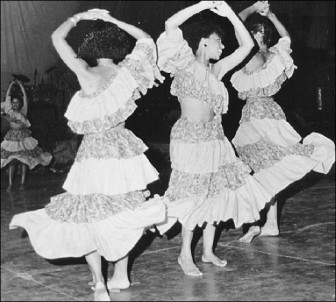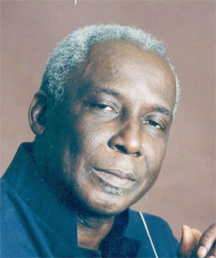The year 2012 is generally regarded as the 50th anniversary of Independence in the Caribbean. At least one cultural event that is commemorating this regionally is the Annual West Indian Literature Conference which is using this as its theme when it meets at the University of Miami in October, 2012.
While there is this general notion of 50 years of Independence across the region, it applies to the English Caribbean and there are different dates for the beginning of the Independence movement in various West Indian territories that were colonies of Britain, and the actual dates for Indepen-dence in individual territories range from 1962 to the 1970s. Each of these will have their own celebrations when these anniversaries come up. But an approach to focusing the Independence concept at a regional level has been already embraced, and Haiti’s 200th Anniversary was prominently marked in anglophone Caricom territories in 2003, including a major conference with history, literature and drama in Trinidad.
 This notion of 50 years of Indepen-dence is really because of two nations, Jamaica, which was the first of the British West Indies to attain this political status on August 6, 1962, and Trinidad and Tobago who followed on August 31, 1962. They set the standard for the rest of the region in which the Independence movement was accelerated thereafter. Two other new nations lowered the Union Jack in 1966, creating the four founding members of Caricom. The OECS islands then moved from colonies to Associated States and then, one by one, to independent nations.
This notion of 50 years of Indepen-dence is really because of two nations, Jamaica, which was the first of the British West Indies to attain this political status on August 6, 1962, and Trinidad and Tobago who followed on August 31, 1962. They set the standard for the rest of the region in which the Independence movement was accelerated thereafter. Two other new nations lowered the Union Jack in 1966, creating the four founding members of Caricom. The OECS islands then moved from colonies to Associated States and then, one by one, to independent nations.
Jamaica is now at the tail-end of an elaborate programme of celebrations. Quite appropriately, this included the staging of classic dramas, new productions of some of the most memorable plays in the nation’s recent history. This is of significance because of the central event that has been the focus of the celebrations over the 50 years. The Jamaica Festival (which came to be popularly known as just ‘Festival‘) was created in 1962 with organised street dances and public cultural events.
Jamaica is not within the carnival belt and never had a carnival like Trinidad and the Eastern Caribbean, but like the entire Caribbean region, it is given to creating in the tradition of Caribbean performance for these kinds of celebrations. Festival, almost naturally developed in the carnivalesque tradition with street theatre, masquing, music, dance and an explosion of the performing arts. Because of the proximity of Emancipation celebrations on August 1 which had been there for a long time, a number of old performance traditions were incorporated into the festival along with the fine arts, literature, a street parade of costumed bands, floats and a costumed queen. But while August 6 is the Festival Day, the Jamaica Festival includes a build-up from June through July with major competitions in poetry, short-story writing, drama (playwriting) and drama (performance in the theatre), dance, music, choral singing, elocution and performance poetry, with a national festival song competition which attracts the major professional reggae singers.
That concentration in the Festival in many ways reflects some of the very important elements of cultural development that have been central to Jamaican life since 1962. In addition, they represent areas in which Jamaica has made important contributions to what may be called Caribbean culture(s) over the past 50 years. Many of the Jamaican traditions and creativity have been pivotal to the development of the arts and to the character of the popular culture in the Caribbean.

There is a wide range of outstanding achievements that Jamaica can claim since Independence. These may be found in all branches of the arts within several disciplines including literature, the fine arts, the performing arts and cultural traditions. Several very important developments may be highlighted if attention is paid specifically to literature, theatre, popular music, film, cultural industries and the shaping of the popular culture.
An examination of Jamaican pre-independence literature will unearth a number of important establishments. These include the rise of social realism in West Indian fiction which took place very early in Jamaica, spearheaded by a minor novelist HG De Lisser as early as 1913. His series of novels, such as Jane’s Career, set in train fiction seriously exposing local social conditions. This type took root in Trinidad in the 1930s and in British Guiana with Mittelholzer’s Corentyne Thunder in 1941 (actually written in the 1930s). Other trends were set in fiction of different types such as the experiments of Claude McKay and the use of creole narratives by Vic Reid in New Day (1949). The further developments which drove the post-independence fiction may be seen in Lindsay Barrett’s experimental poetic narrative and Roger Mais’ handling of working class slum and backyard existence.
These particular developing trends have exploded in Jamaican fiction since 1962, particularly after 1970 when several political and social conditions conspired to create a new outlook and more progressive influences in the writing and understanding of literature. Another minor novel, Orlando Patterson’s Children of Sisyphus forwarded the focus on the proletariat and the urban sub-culture to the point where several fiction writers since 1970 found it necessary to explore these, driven by the contemporary social and political climate and the creative impulses that sprung to the aid of writers treating them. This has not been just straight social realism in fiction but a variety of styles and linguistic choices that have developed. The uses of Creole and Lindsay Barrett-like poetic forms flowered along with the articulation of gender concerns, most of it by strong women writers who also rose along with this literature such as Erna Brodber, Olive Senior and Lorna Goodison.

When put with the poetry one finds a West Indian literature of great depth and preoccupations that have been very influential throughout the region and have made important contributions to the literature. A lingering feature of pre-independence poetry has been the imitative forms and the dependence on English verse of former generations along with the critical yardsticks used to measure it. Important post-independence developments have been not only the creation of locally rooted verse forms but the confidence in their value, the use of universal forms without distracting self-consciousness and the emergence of reliable criticism that recognises the independence of Caribbean poetry. Central to this has been the rise to the accepted mainstream of Creole verse after Independence to the point where it strongly influenced contemporary forms including a strong oral quality, the use of indigenous forms and the creation of new ones such as dub poetry and its extension – performance poetry.
The most important advancement in drama happened after 1970 with new forms of dramatic realism that also shaped the rise of professional theatre to its most influential levels across the Caribbean. This can be very specifically placed around 1971 with The Barn Theatre of Trevor Rhone and Yvonne Jones Brewster. It set off a very high standard of social realism in drama with commentary and satire using local language and a variety of forms that moved in many different directions as the years progressed. Within that development were Carmen Tipling and Denis Scott, but Scott was also the innovator of another form of experimental theatre that became extremely influential in Caribbean theatre after the early 1980s.
But there were yet other forms starting in independent Jamaica that set trends for the whole Caribbean. These included the Scott-influenced theatre of improvisation and a type that moved opposite to that – the popular theatre. This latter has included comedy and the now overwhelmingly popular roots theatre accompanied by its level of professional and commercial concentration. Linked to this are the very audience-oriented plays which have drawn from the older pre-independence traditions of the Jamaica Pantomime and the working class Vaudeville.
Dance in its pure form may be counted among achievements according to the way it advanced and re-rooted (and re-routed) itself since the 1960s. This was highly influenced by the founding of schools of dance and dance companies and above all by the work of Rex Nettleford. The founding of the National Dance Theatre Company (NDTC) drove the independence of Jamaican and then Caribbean dance theatre, redirecting it towards indigenous forms and traditions, advancing choreography and inspiring the formation of several companies.
Jamaica can count among its post-Independence achievements the meteoric ascendancy of reggae music followed by dance hall which colonised the world. This was not due just to Bob Marley who has only been the greatest of the lot, because others before him and later have been responsible for this. Indivisible from the dance hall composition and performance is the urban sub-culture that formed and sustains it and its continuing prominent place and influence in the popular culture.
While those have been the most lucrative and internationally felt cultural industries produced by Jamaica, there is another that strives to reap even 10% of that wealth and glory. That is the endeavours in film and cinema that have made very great strides since The Harder They Come and Life and Debt, but which struggle to find financing. These lead a long and significant list of other cultural industries that have developed in independent Jamaica. It has become accepted that one can build a career and earn a living from the arts and cultural enterprise. While there is still a very long way to go, funding is hard to come by and it might not yet have arrived in financial stability. Over the 50 years since political nationhood, Jamaica has led the way in the independence of cultural industries in the Caribbean.




